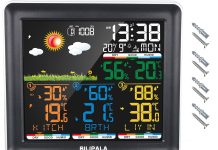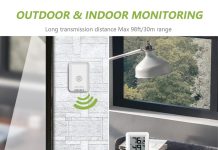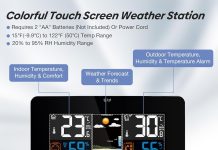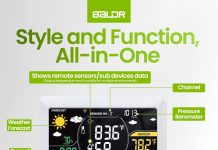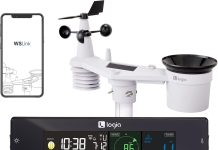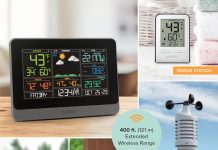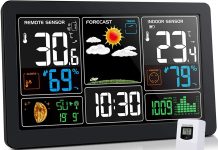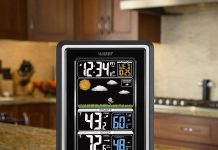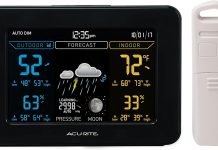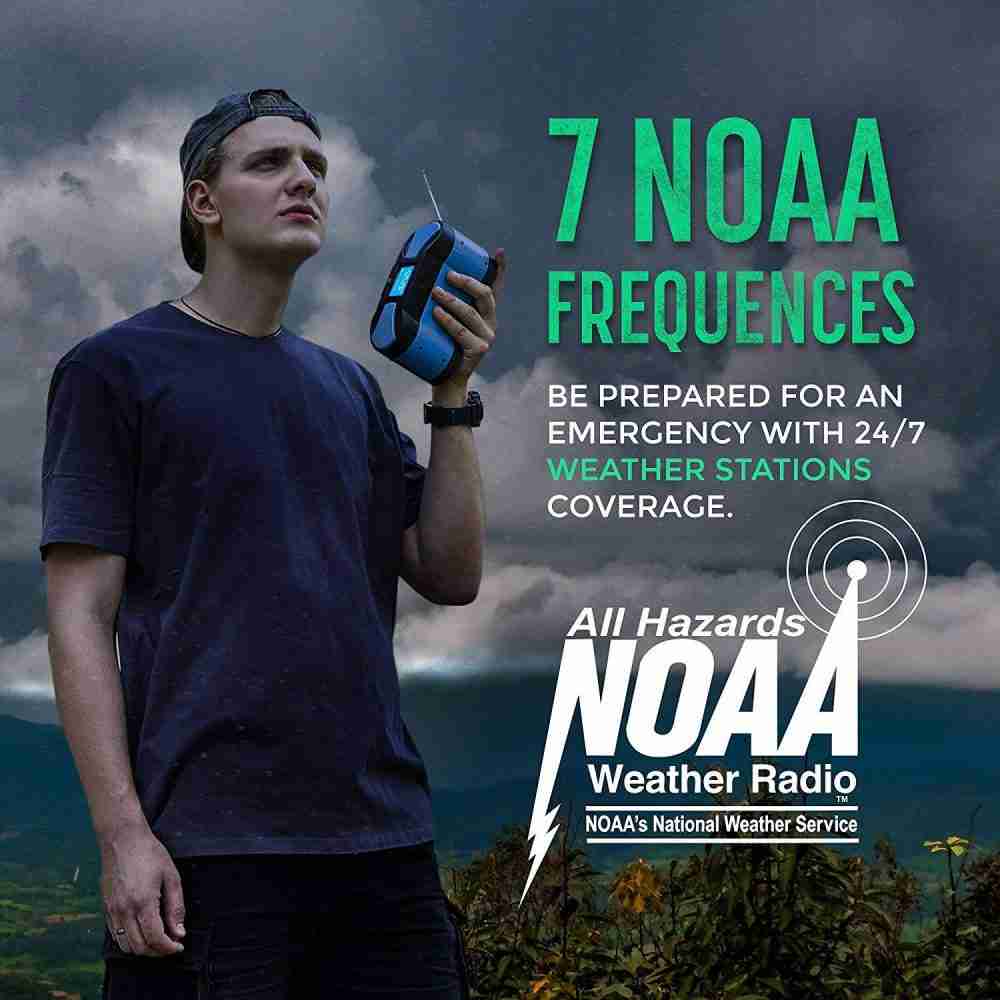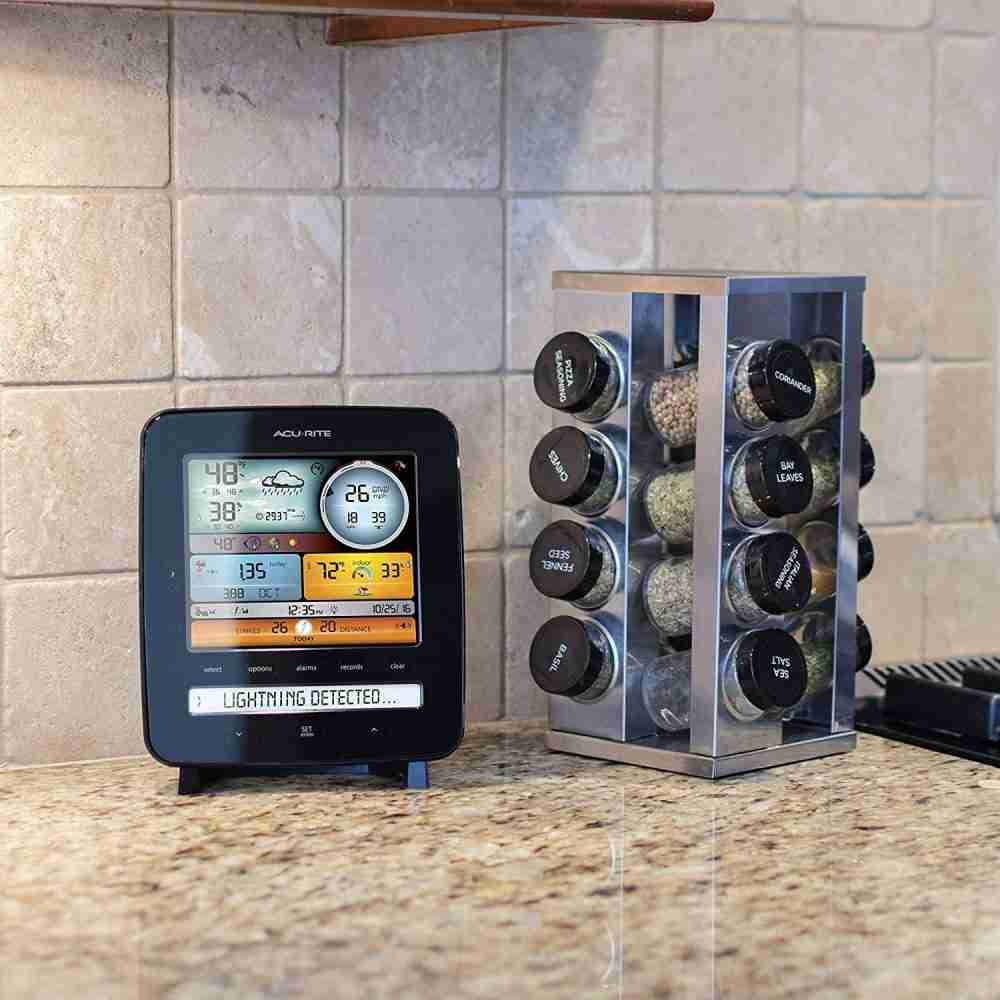Have you ever wondered how often you should calibrate the sensors on your home weather station? It’s an important question to consider if you want to ensure accurate and reliable weather readings.
Calibration plays a crucial role in maintaining the integrity of your weather data, as it adjusts the sensors to account for any changes or drift that may occur over time.
In this article, we’ll explore the recommended frequency for calibrating your home weather station’s sensors and why it’s essential for getting the most accurate weather information for your location. So, let’s dive in and discover the best practices for keeping your home weather station in top-notch condition.
Factors that Affect Sensor Calibration Frequency
Sensor Type
The type of sensor used in a weather station greatly influences the calibration frequency. Different sensors have varying degrees of sensitivity and are exposed to different environmental factors, which can lead to variations in their performance over time. Therefore, it is essential to consider the type of sensor when determining how often it should be calibrated.
Accuracy Requirements
The accuracy requirements of a weather station also play a crucial role in determining the calibration frequency. If high levels of accuracy are necessary for the data collected by the sensors, more frequent calibration may be required. On the other hand, if the data’s accuracy demands are relatively lower, less frequent calibration may be acceptable.
Environmental Conditions
The environmental conditions in which a weather station operates can significantly affect the calibration frequency of its sensors. Extreme temperatures, humidity levels, or exposure to dust, dirt, or other pollutants can cause sensor drift or deterioration over time. In such cases, more frequent calibration may be necessary to maintain accurate and reliable measurements.
Manufacturer Recommendations
Manufacturers often provide recommendations for the calibration frequency of their specific sensors. These recommendations are based on extensive testing and research, considering factors such as sensor design, operating conditions, and accuracy requirements. Following the manufacturer’s guidelines is advisable to ensure optimal sensor performance and longevity.
Recommended Calibration Intervals for Common Weather Station Sensors
Temperature Sensor
For most home weather station temperature sensors, calibration is typically required every 1-2 years. However, if the sensor is exposed to extreme temperature variations or high humidity levels, more frequent calibration may be necessary to maintain accurate readings.
Humidity Sensor
Humidity sensors should generally be calibrated every 1-2 years, similar to temperature sensors. However, it is crucial to consider the sensor’s operating environment, as high humidity levels or exposure to moisture can impact its accuracy more rapidly.
Barometric Pressure Sensor
Barometric pressure sensors typically require calibration every 2-3 years. However, if the sensor is used at high altitudes or is subject to frequent fluctuations in atmospheric pressure, more frequent calibration may be necessary to ensure accurate pressure readings.
Wind Speed Sensor
Wind speed sensors should be calibrated every 1-2 years. However, more frequent calibration may be required to maintain accurate measurements in areas with consistently high wind speeds or severe weather conditions.
Wind Direction Sensor
Calibration for wind direction sensors should be done every 1-2 years. However, if the sensor is exposed to harsh environmental conditions, such as salt air near the coast, more frequent calibration may be necessary to ensure precise wind direction readings.
Rain Gauge
The calibration frequency for rain gauges depends on their design and construction. Generally, calibration every 1-2 years is suitable for most rain gauge sensors. However, if the rain gauge is subject to clogging from debris or suffers from wear and tear, more frequent calibration may be required.
Importance of Regular Calibration
Maintaining Accuracy
Regular calibration is essential to maintain the accuracy of weather station sensors. Over time, sensors can drift from their original calibration settings, leading to inaccurate measurements. By calibrating sensors at the recommended intervals, we can ensure that the data collected is reliable and representative of the actual weather conditions.
Ensuring Reliability
Weather data is crucial in many applications, such as meteorology, agriculture, and environmental monitoring. To ensure the reliability of the collected data, it is essential to calibrate the sensors regularly. By doing so, we can have confidence in the measurements and make informed decisions based on accurate and reliable weather information.
Preserving Longevity
Proper calibration helps in preserving the longevity of weather station sensors. When sensors are not calibrated regularly, they may experience drift or become less sensitive. This can lead to incorrect measurements, early sensor failure, or the need for more frequent replacements. By adhering to the recommended calibration intervals, we can prolong the lifespan of the sensors and optimize their performance.
Methods of Sensor Calibration
Temperature Sensor Calibration
Temperature sensor calibration typically involves comparing the sensor’s readings to a known reference, such as a calibrated thermometer. The sensor is placed in a controlled temperature environment, and any deviations in its readings are adjusted until accurate measurements are achieved.
Humidity Sensor Calibration
Humidity sensor calibration is usually done by comparing the sensor’s readings to a calibrated relative humidity generator. The sensor is exposed to known humidity levels, and any discrepancies in its readings are corrected until precise humidity measurements are obtained.
Barometric Pressure Sensor Calibration
Barometric pressure sensor calibration involves comparing the sensor’s readings to a calibrated barometer. The sensor is placed in a controlled pressure environment, and adjustments are made until the sensor accurately measures atmospheric pressure.
Wind Speed and Direction Sensor Calibration
Wind speed sensor calibration typically requires comparison to an anemometer with a known accuracy. The sensor is exposed to controlled wind speeds, and its readings are adjusted until accurate wind speed measurements are achieved. Wind direction sensor calibration involves comparing the sensor’s readings to a known reference, such as a calibrated compass or wind vane. The sensor is aligned with known wind directions, and any discrepancies in its readings are corrected until precise wind direction measurements are obtained.
Rain Gauge Calibration
Calibrating a rain gauge involves comparing its measurements to a calibrated reference, such as a known rainfall volume. The rain gauge is tested by collecting a specific amount of water, and any deviations in its measurements are adjusted until accurate rainfall recording is achieved.
Signs that Calibration Is Needed
Temperature Reading Inconsistencies
If the temperature readings from a weather station sensor consistently deviate from local weather reports or other reliable sources, it may be a sign that calibration is needed. Inaccurate temperature measurements can impact the overall accuracy of the weather data collected.
Humidity Deviations
Significant deviations in humidity readings compared to local weather reports or nearby monitoring stations can indicate the need for sensor calibration. Inaccurate humidity measurements can affect weather predictions, crop irrigation decisions, and indoor comfort control.
Barometric Pressure Drift
If the barometric pressure readings fluctuate significantly compared to nearby weather stations or forecast services, it may indicate that the sensor requires calibration. Accurate barometric pressure measurements are crucial for weather forecasting and identifying pressure system changes.
Inaccurate Wind Measurements
Calibration may be necessary if the wind speed or direction measurements from a weather station sensor consistently differ from nearby anemometers or wind vane observations. Accurate wind measurements are essential for understanding weather patterns, predicting storm intensities, and planning outdoor activities.
Incorrect Rainfall Recording
Calibration may be needed if the rain gauge consistently overestimates or underestimates rainfall compared to other reliable measurements or nearby weather stations. Accurate rainfall recording is vital for agriculture, water resource management, and flood prediction.
Self-Calibration vs. Professional Calibration
Self-Calibration
Self-calibration involves following the manufacturer’s guidelines and using calibration equipment to verify and adjust the weather station sensors. It can be cost-effective for individuals with technical expertise and access to appropriate calibration tools. However, self-calibration may not be as accurate or comprehensive as professional calibration.
Professional Calibration
Professional calibration involves sending the weather station sensors to a specialized facility or hiring a professional technician to perform the calibration. This option ensures precise and accurate calibration using advanced equipment and expert knowledge. Professional calibration is especially recommended for high-accuracy applications or when self-calibration is not feasible.
Tips for Proper Sensor Calibration
Follow Manufacturer Guidelines
Always refer to the manufacturer’s guidelines for sensor calibration intervals and procedures. Following their recommendations ensures the calibration process aligns with the sensor’s design and accuracy requirements.
Use High-Quality Calibration Equipment
Invest in high-quality calibration equipment to ensure accurate and reliable calibration results. Using substandard or non-calibrated equipment may lead to inaccurate adjustments or invalid calibration.
Record Calibration Details
Maintain a detailed record of each sensor’s calibration, including the date, equipment used, adjustments made, and any observed deviations. These records reference future calibrations and can help identify potential issues or patterns over time.
Calibrate for Multiple Weather Conditions
Consider calibrating the weather station sensors under various weather conditions to account for environmental factors. This helps ensure accurate measurements in different climates or seasons.
Common Mistakes to Avoid During Calibration
Irregular Calibration Schedule
Neglecting or not following a regular calibration schedule can lead to inaccurate weather data. It is essential to adhere to the recommended intervals to maintain accurate sensor measurements.
Improper Handling of Sensors
Mishandling the sensors during calibration, such as touching sensitive components or exposing them to excessive force, can result in damage or inaccurate adjustments. Always follow proper handling procedures to avoid any mishaps.
Neglecting Environmental Factors
Failing to account for environmental factors, such as temperature and humidity during calibration, can lead to inaccurate adjustments. Ensure that calibration is conducted in conditions representative of the sensor’s typical operating environment.
Skipping Calibration Steps
Skipping or incorrectly performing calibration steps, such as not allowing the sensor to stabilize or not following the calibration procedure meticulously, can result in inaccurate adjustments. It is crucial to follow the calibration process precisely to achieve optimal results.
Conclusion
Regularly calibrating a home weather station’s sensors is essential for maintaining accurate and reliable weather data. Factors such as sensor type, accuracy requirements, environmental conditions, and manufacturer recommendations should be considered when determining the calibration frequency.
Following recommended calibration intervals, employing proper calibration methods, and avoiding common mistakes can help preserve the sensors’ accuracy, reliability, and longevity. Whether opting for self-calibration or professional calibration, ensuring regular and accurate calibration is crucial for obtaining precise weather measurements and making informed decisions based on reliable weather data.


